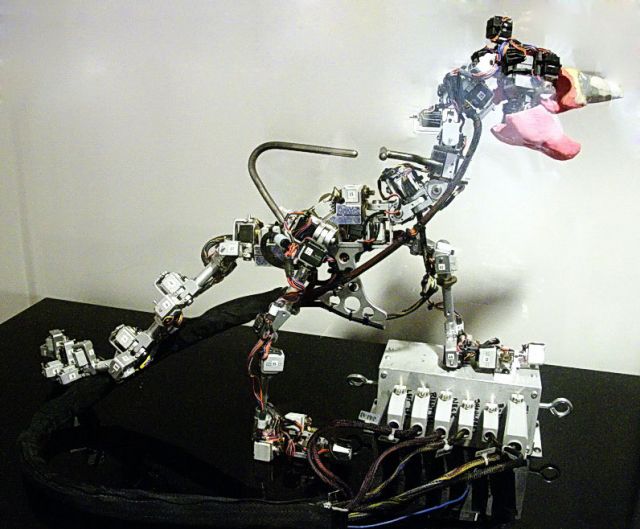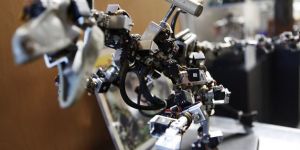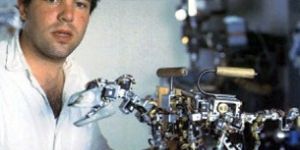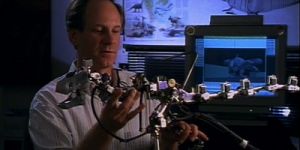Brian Knep
The Dinosaur, or Direct, Input Device (DID) was developed for Jurassic Park so that traditional animators could work with computer models without learning the arcana of computer animation software. At the time, it was uncertain whether there were enough well-trained computer animators to produce the complex and subtle animation required to make the dinosaurs move realistically. There were, however, many extremely talented, highly experienced animators working with traditional tools. The DID was designed to bridge these two worlds.
Stop-motion animators often work with an armature that they pose for each frame of animation. The DID uses a slightly larger version of this traditional armature, but the angle of each joint is monitored with sensors. The data from these sensors is used to animate an on-screen, computer model.
Originally developed for a single production, the system has become a workhorse in the production of many motion pictures, including Starship Troopers and Three Wishes, and its tracking abilities used in other applications, such as accurate surface digitization and robust capture of full-body motion performances. The specifics were published in the proceedings of SIGCHI (pdf), and in 1997 its developers were awarded a Technical Achievement Award from the Academy of Motion Picture Arts and Sciences.
Developers
Craig Hayes (Tippett Studios)
Brian Knep
Rick Sayre (Pixar Studios)
Thomas Williams



